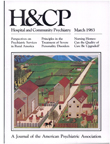The Treatment of Antisocial and Borderline Personality Disorders
Abstract
Because of continuing diagnostic confusion, little empirical evidence exists to guide the clinician in treating patients with antisocial and borderline personalities. However, there is an extensive clinical literature based on the experience of many workers in the field, and it is possible to outline broad areas of agreement and major controversies. The resistance of the patient and the intense counter transference he typically evokes make treatment difficult no matter what the approach. Most authors agree that treatment of the antisocial personality must begin in a residential setting with an active milieu if it is to have any chance of success. Severe borderlines may also require a great deal of structure to supplement psychotherapy; with them, however, the therapist canfeel more optimistic about an approach stressing the clarification of maladaptive defenses and the interpretation of negative transference.
Access content
To read the fulltext, please use one of the options below to sign in or purchase access.- Personal login
- Institutional Login
- Sign in via OpenAthens
- Register for access
-
Please login/register if you wish to pair your device and check access availability.
Not a subscriber?
PsychiatryOnline subscription options offer access to the DSM-5 library, books, journals, CME, and patient resources. This all-in-one virtual library provides psychiatrists and mental health professionals with key resources for diagnosis, treatment, research, and professional development.
Need more help? PsychiatryOnline Customer Service may be reached by emailing [email protected] or by calling 800-368-5777 (in the U.S.) or 703-907-7322 (outside the U.S.).



